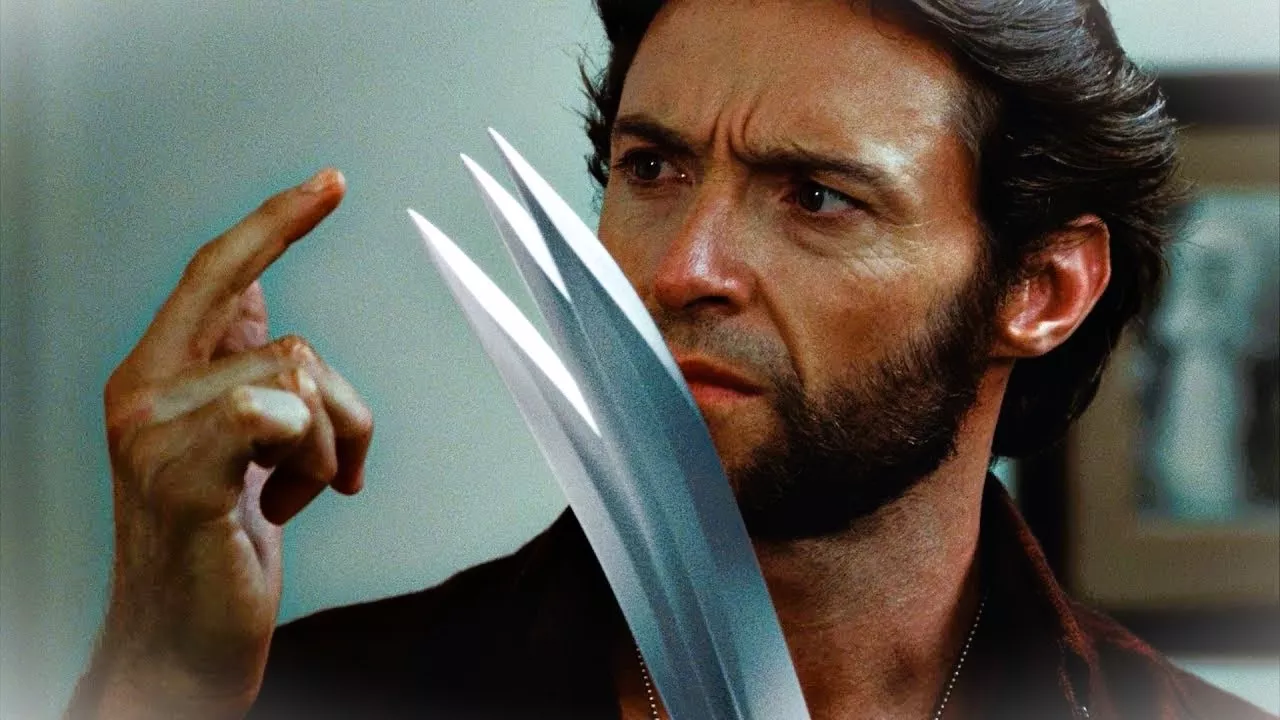The current surge in superhero movies can be directly attributed to the early 2000s, when films like “X-Men” and “Spider-Man” achieved blockbuster success. These movies captured the imaginations of audiences worldwide and sparked a renewed interest in superhero stories. The advancements in CGI technology played a pivotal role in this resurgence, allowing filmmakers to bring larger-than-life characters and epic battles to life on the big screen.
With the evolution of CGI, filmmakers gained the ability to depict superhuman abilities, intricate costumes, and breathtaking action sequences that were previously unimaginable. As the technology improved, comic book movies began to carve out their own unique genre, attracting not only die-hard comic book fans but also a broader audience seeking thrilling and visually stunning experiences.
The success of superhero movies has led to a flood of new releases, with studios eager to capitalize on the popularity of the genre. Audiences can now expect to see a constant stream of superhero adventures, with new films hitting cinemas regularly. This ongoing demand has also pushed the boundaries of CGI even further, challenging visual effects artists to push the limits of their creativity and technical prowess.
However, despite the incredible advancements in technology, even some of the most expensive superhero movies have had their share of disappointments. Regardless of the amount of money invested, not every moment in these films lives up to the high standards set by the visual effects industry. Some instances fall short due to overly ambitious concepts that stretch the capabilities of CGI, while others suffer from time constraints and the pressure placed on visual effects teams to deliver on tight deadlines.
Identifying the weakest CGI moments in superhero movies can be a subjective task, as different viewers may have varying opinions. However, certain instances have stood out as particularly underwhelming, leaving audiences cringing rather than marveling at the spectacle. From poorly rendered creatures to unrealistic physics, these moments serve as a reminder that even the most technologically advanced films can have their missteps.
Despite these occasional hiccups, it’s important to acknowledge the incredible progress made in the world of CGI and the significant role it plays in bringing superhero stories to life. The dedication and talent of visual effects artists continually push the boundaries of what is possible, captivating audiences with their imaginative creations and immersive worlds. As technology continues to evolve, we can expect even more breathtaking and seamless CGI in future superhero movies, further blurring the line between reality and fantasy.
Henry Cavill’s mustache
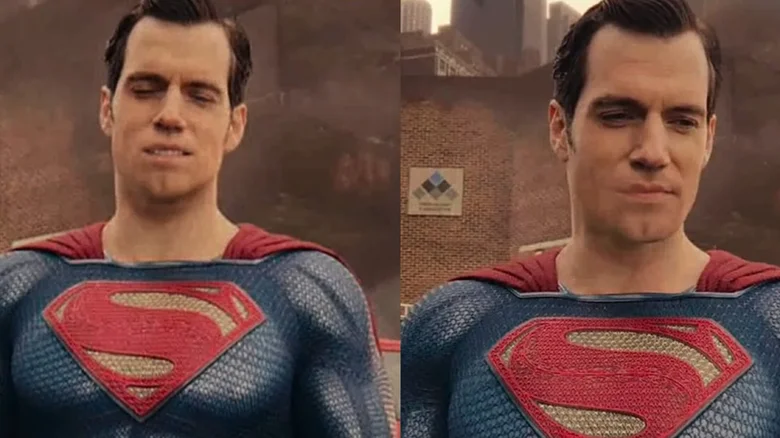
In the battle for superhero movie supremacy, Marvel had already achieved immense success with “The Avengers,” while DC struggled to catch up. Finally, in 2017, DC released “Justice League.” However, the film’s production was plagued with difficulties, including a change in directors and extensive reshoots. Perhaps the most perplexing moment occurred right at the start of the film, involving an awkward CGI attempt to remove Superman’s mustache.
This incident stands as one of the most absurd occurrences in the history of comic book movies. Henry Cavill, the star of “Justice League,” had grown a thick mustache for his role in “Mission: Impossible Fallout.” When replacement director Joss Whedon called for reshoots, Paramount, the studio behind “Fallout,” refused to let Cavill shave off his mustache. Despite Warner Bros. offering to cover the cost of CGI replacement in the Tom Cruise sequel, they were left with no choice but to shoot new scenes with a mustachioed Cavill and digitally remove the facial hair through CGI.
Regrettably, the result is far from convincing, exacerbated by the rushed nature of the process. The lack of realism is evident not only in the opening scene but also throughout the film, as the poorly executed CGI upper lip of Superman becomes glaringly noticeable.
Black Adam’s weird head
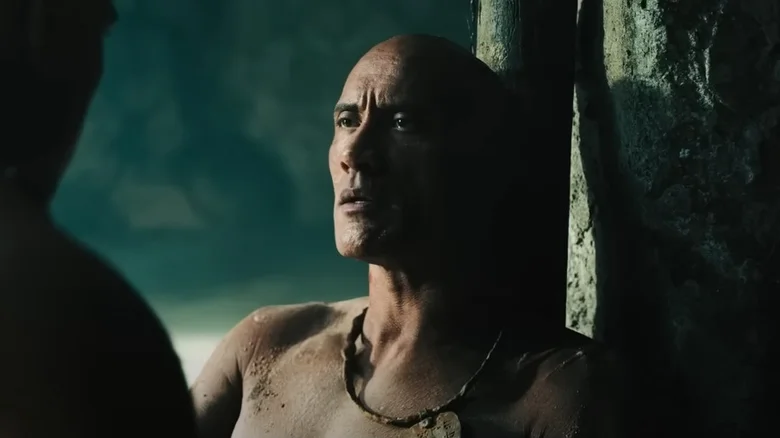
Announced as far back as 2007, “Black Adam” finally made its way to the screen after a 15-year wait. The prolonged development period did have its advantages, as it allowed for significant advancements in technology. With a colossal budget exceeding $200 million, fans could reasonably expect the film to showcase the pinnacle of visual effects achievable in the genre. However, despite these favorable circumstances, “Black Adam” still fell victim to at least one instance of subpar CGI.
Similar to “Captain America: The First Avenger,” the movie includes a sequence depicting the protagonist before obtaining his extraordinary powers, utilizing digital manipulation to make the muscular actor appear smaller. While the seamless combination of Chris Evans and a more slender body double worked flawlessly in the 2011 Marvel film, something feels off about Dwayne Johnson’s enlarged head on a more average-sized person’s body in “Black Adam.” Whether it’s the odd proportions or the elongated neck, the CGI itself simply falls short of expectations. The result is a distracting uncanny valley effect that causes the Rock’s head to stand out conspicuously, sometimes quite literally like a sore thumb.
Blade’s battle with Deacon Frost
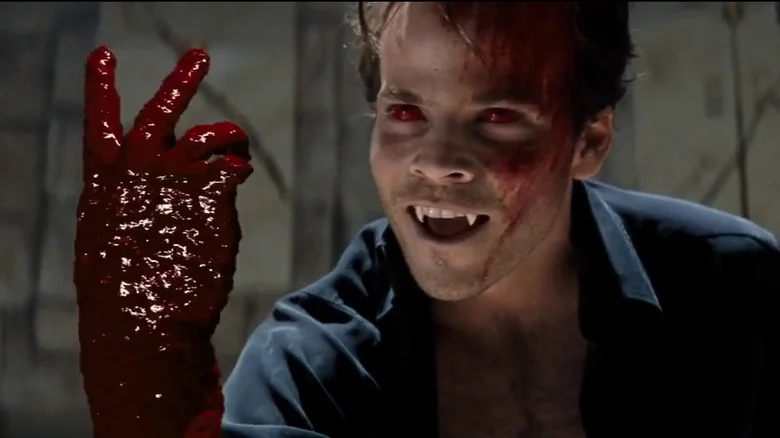
One could argue convincingly that the entire genre of superhero movies as we know it today may not have existed without the 1998 film “Blade.” Its success paved the way for subsequent hits like “X-Men,” “Spider-Man,” and more, ultimately leading to the establishment of the Marvel Cinematic Universe (MCU) and reshaping the landscape of modern cinema. However, despite its significant impact, “Blade” still has its fair share of questionable moments, with one of the shakiest being the climactic showdown between the sword-wielding hero and the vampire antagonist, Deacon Frost, due to some noticeably flawed CGI.
Being produced in the late ’90s, “Blade” entered the scene when CGI technology was still relatively nascent, making its lackluster quality somewhat expected. However, during that time, there were examples of convincing CGI in early blockbusters like “Jurassic Park.” The issue with “Blade” lies in its ambitious attempts that surpass its capabilities. Consequently, the fight scene is replete with awkward CGI moments, beginning with artificial-looking sparks as the characters’ swords clash. The problems escalate as a fake hand slice occurs, culminating in the film’s most absurd instance: Frost’s body is gruesomely divided into two. A noticeably CGI-generated mass of blood pours out, and Frost’s separated torso comically reunites with his legs as if the dismemberment never happened.
Black Panther’s final fight
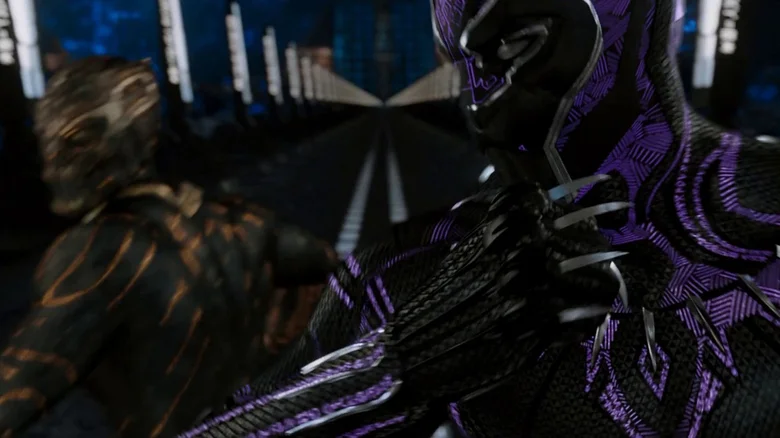
Marvel Studios has received numerous accolades for their exceptional visual effects work since the release of their first film in 2008. This includes an impressive count of 13 Academy Award nominations for Best Visual Effects, spanning from their inaugural project “Iron Man” to their grand 2018 spectacle, “Avengers: Infinity War.” However, one film that surprisingly didn’t receive a nomination in this category was “Black Panther.” Despite securing a nomination for Best Picture, the movie faced widespread criticism for its underwhelming CGI moments. While many have criticized the infamous rhino scene during the climactic battle, it is the hero-villain confrontation that lands a spot on our list.
The pivotal clash occurs within an underground subway tunnel beneath the vibrant city of Wakanda, where sonically guided trains zoom past. It is there that T’Challa (Chadwick Boseman), clad in his Black Panther suit, engages in a life-or-death hand-to-hand combat with his adversary, Erik Killmonger (Michael B. Jordan). However, the issue lies in the fact that the entire showdown is entirely CGI, and it unmistakably looks the part, resembling character models straight out of a Pixar film. The stiff and lifeless choreography fails to surpass the quality of a cut scene from a video game, and when their human faces are revealed, the cringe factor only intensifies.
Wolverine’s fake claws
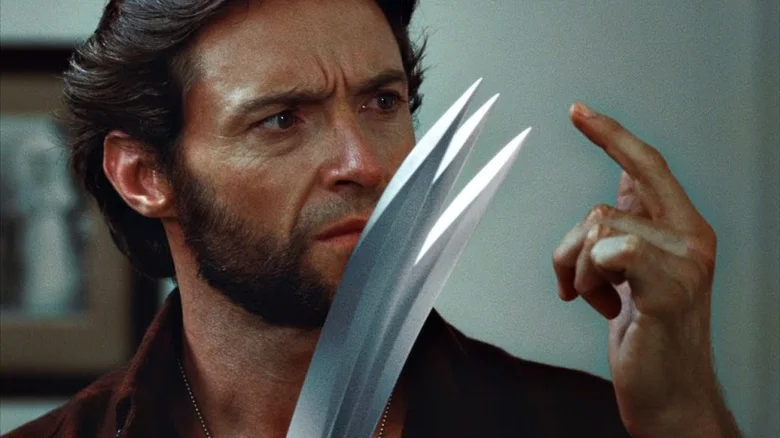
In the first three “X-Men” movies, Hugh Jackman relied on physical props to bring Wolverine’s iconic claws to life. However, when it came to the spin-off film “X-Men Origins: Wolverine,” a different approach was taken. While CGI had been used sparingly in previous films, particularly for stabbing scenes, “X-Men Origins: Wolverine” decided to forgo physical props entirely and create the adamantium claws entirely through CGI. Unfortunately, the result was far from convincing, with the computer-generated claws appearing weightless and even silly at times, particularly in the scene where Wolverine inspects them in a mirror.
The disappointing CGI used for Wolverine’s claws in “X-Men Origins: Wolverine” becomes even more perplexing when considering that CGI had successfully rendered metal as early as the mid-1990s. It’s somewhat astonishing to witness a film from 2009 struggle so disastrously with a relatively simple effect. Moreover, the overall visual effects in the film left much to be desired, contributing to it being considered a low point in Hugh Jackman’s portrayal of Wolverine. Fortunately, the filmmakers learned from this CGI mishap, and subsequent installments presented Wolverine’s claws—whether practical or digital—in a far more impressive manner.
The Flash’s multiverse cameos
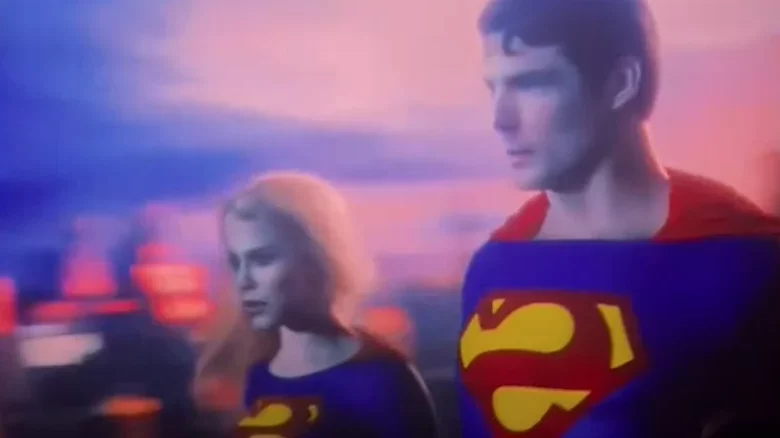
The DCEU, which commenced with “Man of Steel” in 2013, had already been announced to conclude by the time “The Flash” hit theaters. However, the film was still positioned as a massive blockbuster with a reported budget of $200 million. Despite such resources, audiences were left astounded by the subpar quality of the visual effects, leading to numerous cringe-inducing moments of embarrassing CGI.
Perhaps the most egregious example occurs during a sequence where glimpses of various alternate realities are shown. It begins with painfully outdated CGI orbs reminiscent of educational films from the ’90s. The computer-generated recreations of past DC movie universes appear cartoonish at best, featuring digitally crafted representations of Adam West, Christopher Reeve, Helen Slater, and others. The sequence resembles poorly executed, moving hand-painted cardboard cutouts, resulting in an astonishingly awful presentation.
To compound the disappointment, the CW crossover event “Crisis on Infinite Earths” had already executed a series of multiverse cameos more effectively, and on a TV budget. The use of actual actors, including Burt Ward, Robert Wuhl, Alan Ritchson, Tom Welling, Ashley Scott, and even Ezra Miller, contributed to a superior portrayal of the multiverse concept.
Green Lantern’s costume
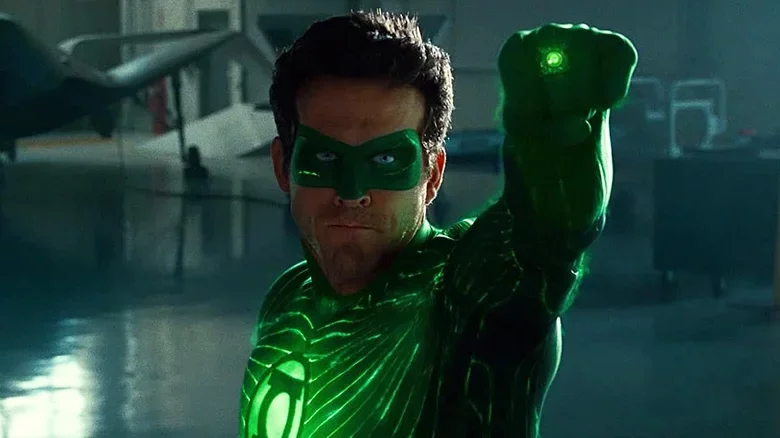
In 2011, the Marvel Cinematic Universe (MCU) was rapidly progressing towards the highly anticipated “The Avengers,” scheduled for release the following year. However, during the same year, DC attempted to kickstart their own cinematic universe with the arrival of “The Green Lantern.” Similar to Marvel’s “Iron Man,” the film focused on a lesser-known hero with a witty personality, portrayed by the charismatic Ryan Reynolds. The only issue was that when Reynolds donned his superhero alter ego’s costume, the effect fell far short of the convincing nature of Iron Man’s armor.
For reasons unknown, the filmmakers decided against employing a practical costume, opting instead for a completely CGI suit. Although this choice aimed to give the character an otherworldly, alien appearance that corresponded to his powers and origins, it ultimately appeared rather absurd. The negative reaction to the CGI costume was so strong that even Reynolds himself joined in the criticism, going as far as to mock its unconvincing nature in his 2016 film “Deadpool.” Fortunately, when Reynolds later took on another superhero role, he was granted the practical suit he had always desired. “I love having the tactile, real deal, all the time,” he expressed his appreciation for the tangible aspect of his new costume.
Bruce’s head in Infinity War
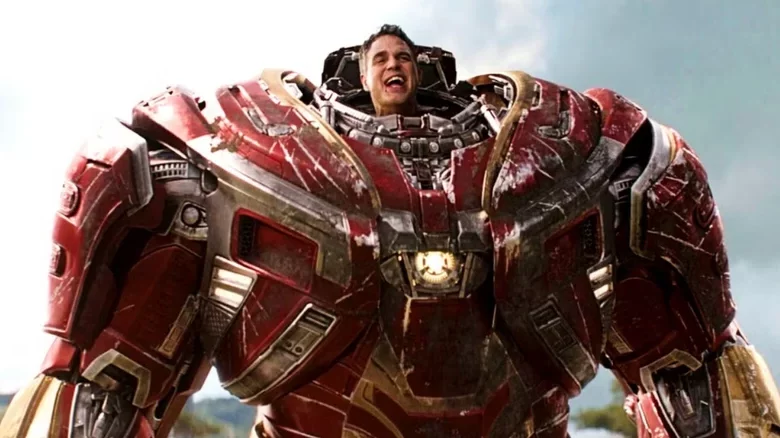
Even in films renowned for their exceptional visual effects, imperfections can arise. A prime example of this is Marvel’s 2018 superhero ensemble spectacle, “Avengers: Infinity War.” Regarded as one of the MCU’s finest movies and garnering an Academy Award nomination for Best Visual Effects, it showcased numerous breathtaking visual accomplishments, including the fully computer-generated character of Thanos. Nevertheless, there was one particular moment that warrants a place on our list, and those who have seen the film likely know precisely which moment is being referred to.
The film unites nearly every hero in the MCU at the time, and it places Bruce Banner in the unfortunate position of donning an armored suit, aptly named the “Hulk-Buster,” after he fails to transform into his Hulk form. While battling Thanos‘ minions, he encounters a pivotal turning point when Thor arrives to join the fight. As Thor pulls back his helmet, he delivers one of the film’s humorous lines. Although audiences may have chuckled at Mark Ruffalo’s delivery of “You’re so screwed now” to the monstrous war dogs, they were not as impressed by the CGI employed to facilitate the moment. Featuring a clumsy floating head hastily inserted into the armor, it left fans chuckling for all the wrong reasons ever since.
Reed ties up the Thing
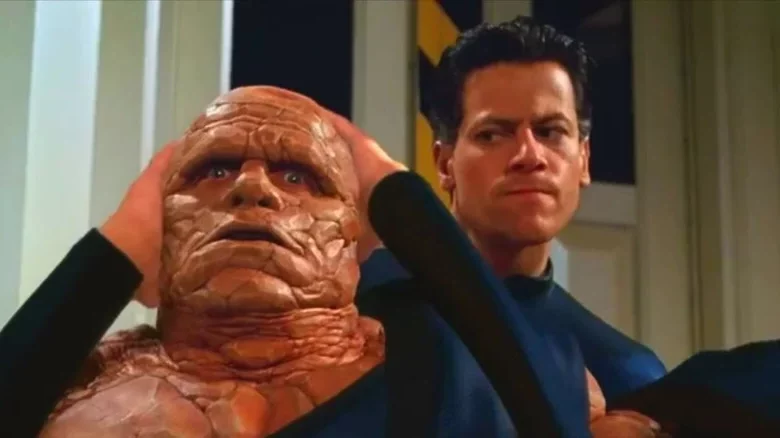
Certain superheroes naturally require extensive special effects to bring their powers to life. In the case of “The Fantastic Four,” it’s not just one hero, but a team of four that relies heavily on VFX. The team’s first theatrical adaptation hit screens in 2005, and while they managed to utilize a rubber suit for the Thing, the Human Torch still required a significant amount of CGI. Additionally, the Invisible Woman’s power of creating force fields necessitated numerous transitional effects. However, it was Mr. Fantastic, with his stretchy abilities, who proved to be the most challenging to bring to life using CGI, and unfortunately, the results were not always successful.
Throughout the film, Mr. Fantastic’s stretching powers were utilized extensively. While some moments showcased decent CGI work, there were few instances where it was executed exceptionally well. The most disappointing moment occurred when Mr. Fantastic attempted to tie up his friend Benjamin Grimm, as it accentuated every flaw in the CGI. The hands appeared cartoonish, the weightlessness felt unconvincing, and there were awkward moments when it seemed as though the two characters weren’t genuinely interacting. This disappointment was further compounded by the fact that just a year earlier, Pixar’s “The Incredibles” had demonstrated how a stretchy hero could be realistically portrayed, even though it was an animated film. In comparison, Mr. Fantastic in “Fantastic Four” fell short of expectations.
Hulk’s fight with his father
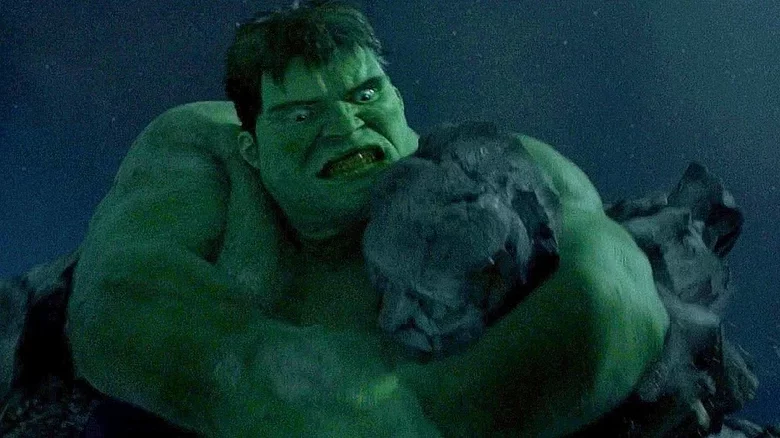
After the successes of “X-Men” in 2000 and “Spider-Man” in 2002, Hollywood recognized the potential of superheroes in driving blockbuster success. It was only natural that they turned their attention to Marvel’s next iconic hero, the Incredible Hulk. In 2003, under the direction of acclaimed filmmaker Ang Lee, “Hulk” was released, marking the character’s debut on the big screen. Gone were the days of a bodybuilder covered in green body paint; this was the 21st century, and the Hulk was brought to life entirely through the magic of CGI.
However, despite the advancements in computer-generated effects since the early ’90s, the digital rendition of the Hulk may have been a case of ambition exceeding capabilities. Throughout the film, the Hulk’s disproportionate and bloated form appears lumpy and inconsistent, not to mention the sickly shade of bright green that feels off. From the often-ridiculed gamma dogs to the cringe-inducing comic book frames, the film struggles to achieve a visually cohesive and satisfying look, extending beyond just the portrayal of the Hulk. Yet, the film’s worst moment arrives during its climax when the Hulk faces off against his own father, portrayed as a version of the comic book villain, The Absorbing Man. The underwater fight scene frequently evokes the feeling of a poorly executed Saturday morning cartoon rather than a grand, big-budget blockbuster.
Spawn’s cartoon cape
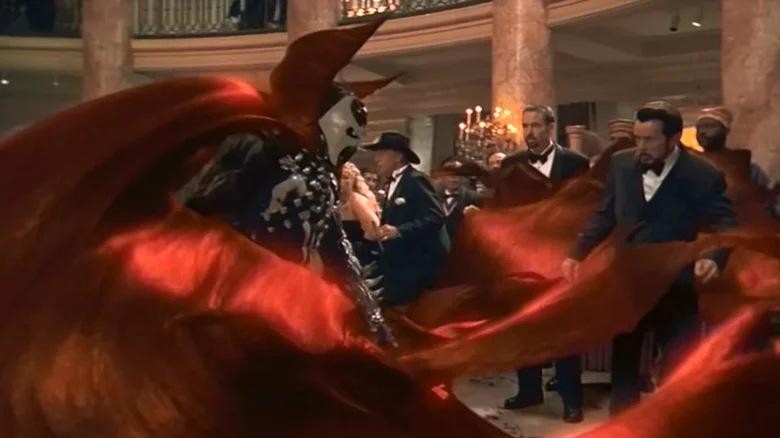
In the early ’90s, Image Comics revolutionized the industry with its captivating titles, including Todd McFarlane’s “Spawn.” The comic book, centered around a mercenary who is resurrected by the devil with demonic powers, gained immense popularity. It quickly led to a feature film adaptation released in 1997, starring Michael Jai White and Martin Sheen. However, one of the character’s most distinctive visual features, his long red cape, was brought to life through CGI in a manner that left fans wanting.
In the comic book art by Todd McFarlane, Spawn’s cape flowed dramatically, defying practicality and seemingly possessing a mind of its own. To replicate this effect on screen, CGI was employed. Unfortunately, the technological limitations of computer graphics at the time prevented the creation of realistic, fluid fabric movement. Consequently, the CGI cape appears noticeably out of place, particularly when juxtaposed with the practicality of the character’s rubber muscle suit. Moreover, the interaction between the actors and the cape lacks believability. Regrettably, the underwhelming CGI cape was just one of many issues in a film that failed to meet expectations.
Catwoman’s stunts
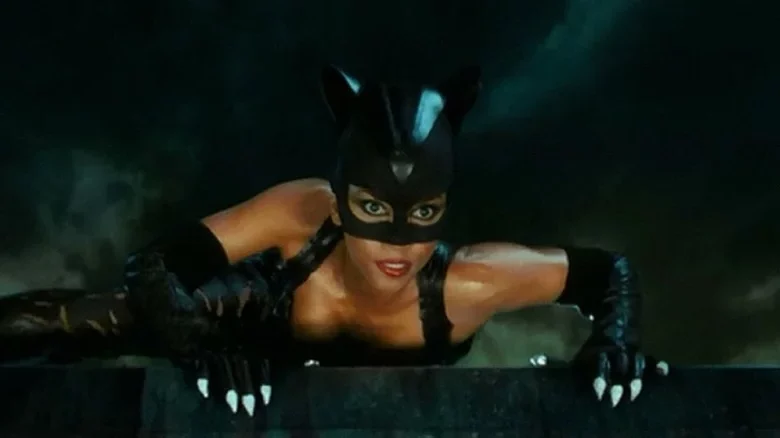
“Spawn” may not be considered one of the worst comic book movies, but “Catwoman” takes the cake in that department. This ill-fated Batman spin-off starring Halle Berry, along with “Elektra,” significantly hindered the progress of female-led superhero films for nearly two decades. One of the major culprits for its downfall was the shoddy CGI. It’s perplexing why the film heavily relied on CGI when the protagonist is simply a woman in a catsuit, using her agility and whip to apprehend villains.
Despite the questionable need for it, CGI was used extensively in the film, employing a computer-generated model of the actress for various actions, including seductively walking along a light pole, scaling buildings, and performing acrobatic feats. In retrospect, these tasks could have been accomplished more convincingly and likely at a lower cost with a skilled stunt double. This baffling use of CGI is one of the most bewildering aspects on this list. Moreover, the CGI fails to blend seamlessly into the scenes, and the digital representation of Halle Berry moves awkwardly, resembling a poorly controlled puppet rather than a believable character.
Elektra’s tattoo monster
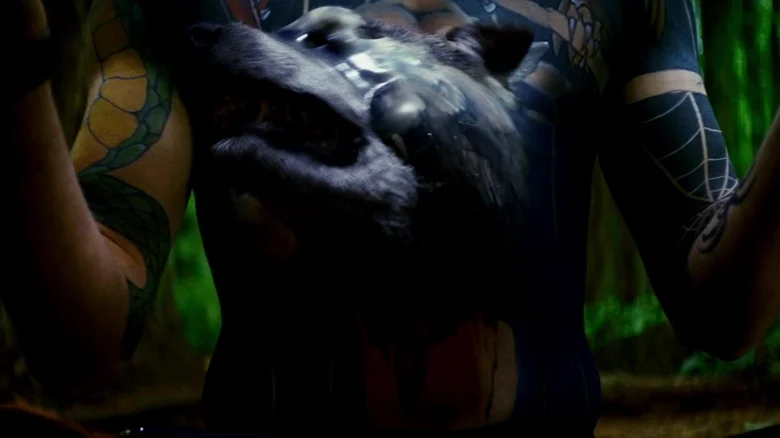
The film “Elektra,” a spin-off from 2003’s “Daredevil” starring Jennifer Garner as the sai-wielding assassin, faced numerous problems beyond its subpar special effects. From cringe-worthy dialogue and nonsensical plot points to weak direction and lackluster acting, the movie struggled to find its footing. However, if the CGI had been impressive, it could have at least offered an enjoyable visual experience and provided fans with a captivating spectacle. Unfortunately, the film’s effects fell short, particularly when it came to depicting the powers of its villain.
The antagonist, Tudo Sokuto, also known as “Tattoo” and portrayed by Chris Ackerman, is covered in tattoos that can transform into living spirits to attack his enemies. While this concept may seem intriguing in theory, its execution on-screen is flawed and lacks coherence. The CGI employed to bring these tattoo spirits to life fails to convince viewers, featuring primitive and cheap-looking morphing effects. The tattoos awkwardly transition into 3D, accompanied by lens flares that resemble a poorly executed Photoshop job.
Hyde in League of Extraordinary Gentleman
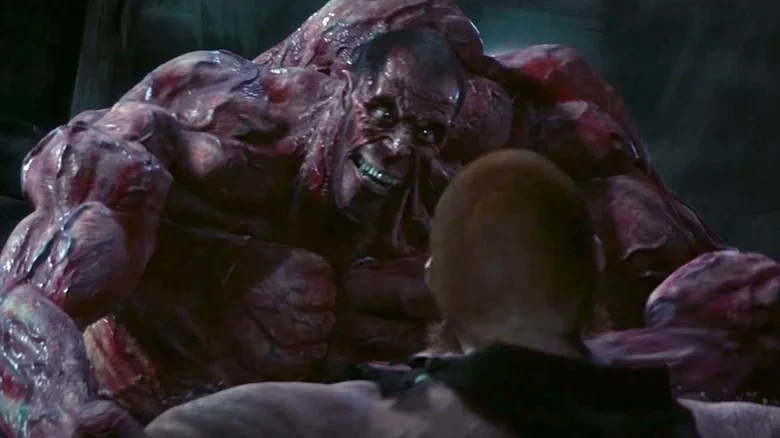
“Catwoman” may have been bad, but even worse was the 2003 adaptation of Alan Moore’s “League of Extraordinary Gentlemen.” This film was so dreadful that it reportedly contributed to Sean Connery’s decision to retire from acting. Taking a mystery-thriller featuring iconic literary characters like Captain Nemo, the Invisible Man, and Mina Harker, it transformed it into a woeful B-grade schlock-fest. The movie received widespread criticism for being a chaotic jumble of conflicting ideas, a nonsensical nightmare that squandered a promising premise and exceptional source material.
Adding to the film’s shortcomings were the sloppy CGI effects used throughout, culminating in the climactic brawl between Mr. Hyde, one of the heroes, and Dante, the villain who undergoes a transformation using a chemical to become a Hulk-like monster. The issue here is not just the poor quality of the digital effects, but also the awkward design of the villain’s mutated form, which elicits more laughter than fear. The fight itself consists of the two oversized characters trading punches for a few minutes, becoming increasingly monotonous, further compounding the film’s considerable flaws. It stands as one of many perplexing “what were they thinking” moments in the realm of bad comic book movies.
